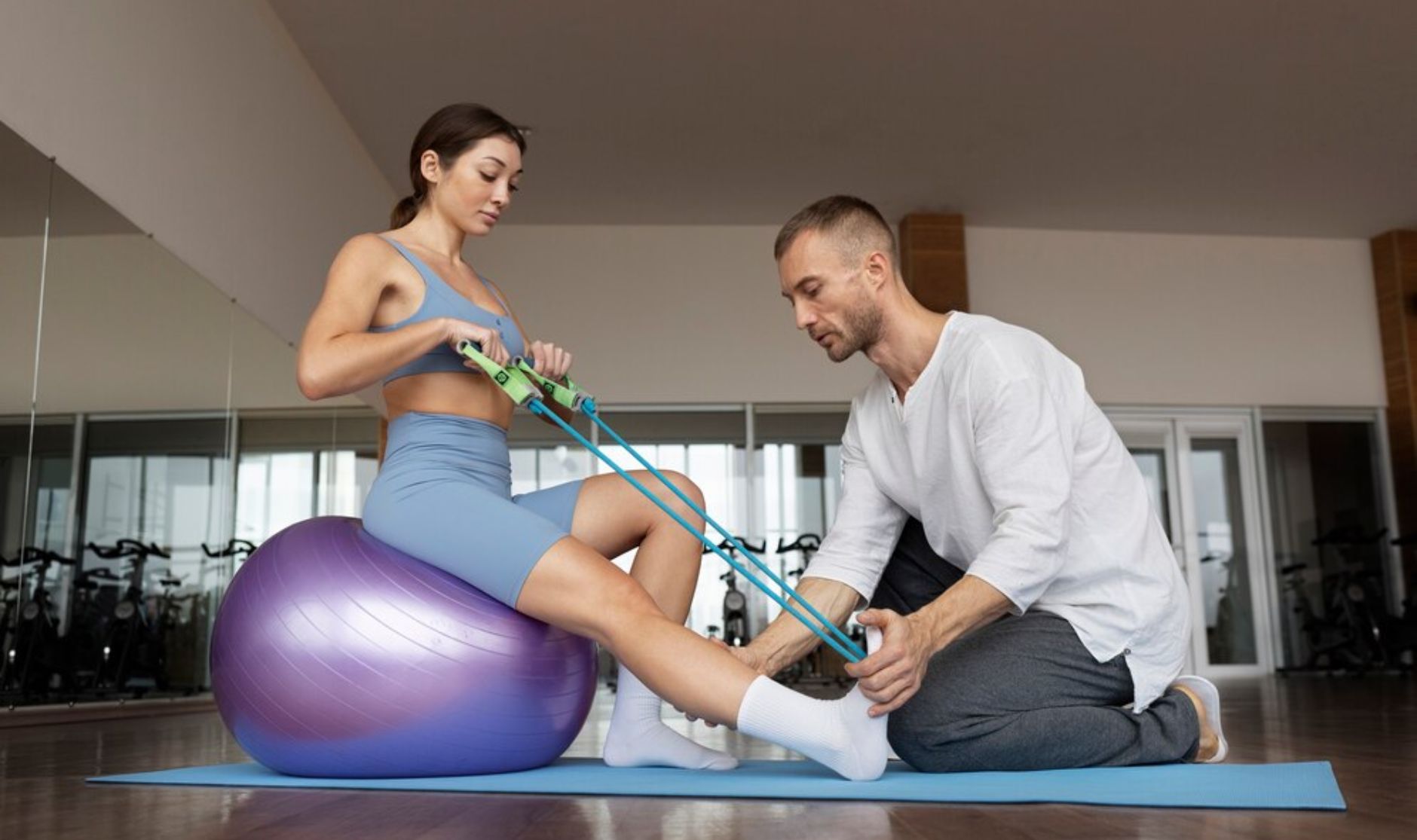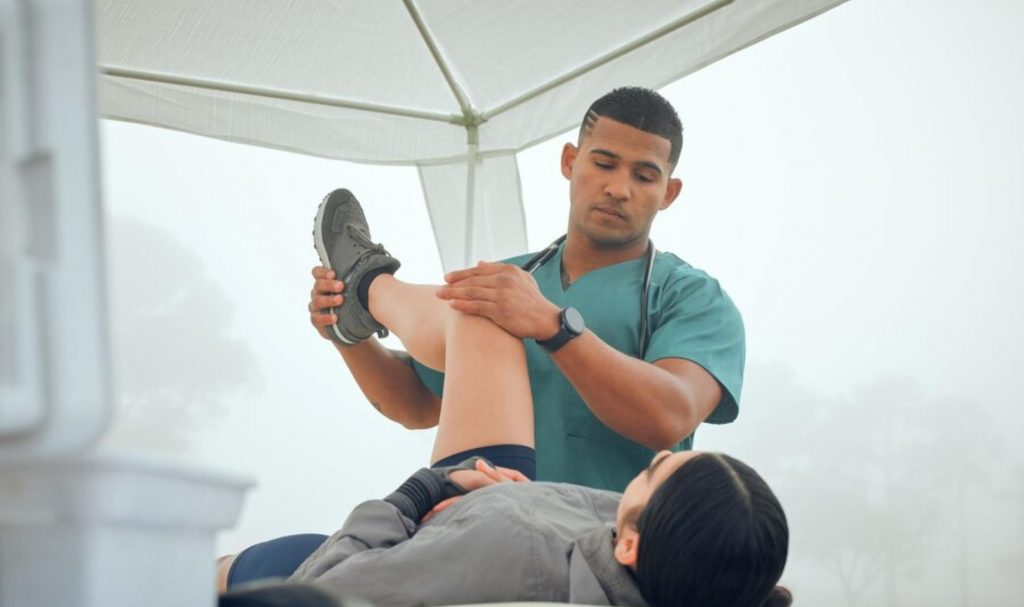How Physiotherapists Help Prevent Sports Injuries in Amateur Athletes
10 May 2025
5 Mins Read

toc impalement
Sports injuries are part and parcel of an amateur athlete’s life. Minor and major injuries often disrupt their schedules, training, and even big tournaments. Sometimes, these injuries can cause major health issues.
However, they don’t always have access to the resources or training that professional athletes do.
That’s where physiotherapists come in. There play an important role of physiotherapy in sports injury. These preofessoinals play crucial roles in preventing injuries by offering valuable assessments, guidance on techniques, and individualized injurry prevention plans.
We will explore how physiotherapists help amateur athletes avoid injuries, ensuring they stay healthy and perform at their best in their chosen sports.
The Role of Physiotherapy in Sports Injury Prevention

Here are the different levels of protection and prevention physiotherapists provide in injury prevention –
1. Assessing Physical Condition to Identify Risks
Physiotherapists take a detailed look at the injury of their patient. They asses the physical condition of the athelete to pinpoint the problem. The overall procedure involves different steps. It starts with the evaluation.
Physiotherapists assess the nature of the pain and physical conditions that pose a health risk. Physiotherapists often assess the physical conditions of the athlete by going through their flexibility, posture, strength, and overall physical movement patterns.
This assessment helps them understand what caused the injury in the first place. For example, a poor body posture often results in muscle joint injuries.
Physiotherapists at https://fixio.com.au/locations/balgowlah-physio/ check the potential risk through those evaluations and recommend the right exercise for improvement. These exercises are often important for amateur athletes who have hardly had any injury prevention.
2. Guiding with Movement Techniques & Patterns
Even athletes make mistakes when trying to go beyond their physical limits. New and ameteur athletes often injure themselves due to lack of professional training and guidance. This can result into poor movement patterns and straining their muscles unnecessarily.
Physiotherapists play important roles in teaching athletes the proper techniques for the sports. It also ensures that these professionals use their body safely without causing any massive injury.
A good example would be a newbie runner taking lessons from a physiotherapist on how to land less impact on the joint. Also, weight lifter can learn the correct posture to avoid any chances of back strain.
3. Strengthening Muscles to Support Joints and Prevent Strain
The role of physiotherapy in sports injury is more critical when it comes to strengthening muscles.
Strong muscles are important for prevneting injuries happening during sports. It’s importnat especially for muscles related to the joints. With weak muscles, it’s difficult to absorb shock effectively or support he body while moving. This can increase the risk of injury.
That’s why a physiotherapist can help by designing a muscle training and strength training program for athletes.
The training routine can help the athlete strengthen their body muscles for dynamic movement during sports. This can reduce chances of injuries.
In addition, these training progrmas also help build strengthen the athlete’s body helping them improve their hamstrings, and prevent knee injuries.
In contrast, tennis players often need to focuson building a shoulder strength to avoid any chances of cuff injuries.
This targeted approach helps build muscle resilience, reducing injury chances while improving overall performance.
4. Enhancing Flexibility to Reduce Injury Risk
It’s essential for atheltes to become flexible and agile.Through proper mobility and flexibility exercises, physiotherapists help prevent many dangers. Tight muscles and restrected joints are often the reason for poor movements in specific body areas.
These professionals incorporate mobility exercises and flexibility training into the injury prevention program. They help ensure that the athletes have a good range of motion that supports effective and fluid movement.
For example, a runner might focus on improving hip flexibility to prevent tightness and potential injuries in the lower back.
Physiotherapists help incorporate mobility and flexibility trainings into the players routine. Physiotherapists can help athletes maintain an optimal body function and prepare them to perform at their best level.
5. Educating Athletes on Injury Prevention and Recovery
Education is vital to injury prevention, and physiotherapists take time to educate athletes about the importance of self-care and injury awareness.
Many amateur athletes may not fully understand the risks associated with overtraining, neglecting rest, or ignoring early warning signs of injury.
Physiotherapists teach athletes to listen to their bodies, recognize signs of fatigue or strain, and take appropriate measures to prevent injuries.
By fostering a mindset of injury prevention, physiotherapists help athletes make informed decisions about their training and rest periods, ensuring they are not pushing their bodies too hard and risking injury.
With this education, athletes become more self-aware and proactive in protecting their bodies.
Physiotherapy Businesses in Sports
Physiotherapy is an integral part of the sports industry. Even when amateur athletes fail to secure physiotherapy on their own, their clubs often come forward to help. If your club doesn’t have a physiotherapy service, it’s high time to get one.
Here are the different levels of care they provide –
On-Field Care
Physiotherapy is a necessary on the field when the athletes get an injury. Having a provider affiliated with the club can offer instant help during such crisis.
Rehabs
Sprains, factures, are almost regular in an athlete’s life. A club can affiliate with a physiotherapy care provider to attend to the needs of their athlete during rehab.
Performance Improvement
Physiotherapists can help improve the overall performance of athletes. They can help athletes use their body to the maximum potential while also preventing potential injuruies.
Specialized techniques
Big sports clubs often partner with physiotherapy providers for specialized techniques. These include deep-tissue massage, dry needling, or assisted stretching. These techniques help athletes address different injuries and improve their overall performance in the field.
Sports Meet Health
In conclusion, the role of physiotherapy in sports injury is a crucial one. They help prevent many injuries athletes could suffer unless they were unaware of specific body movements, postures, and techniques.
With personalized training programs, physiotherapists can help the athletes keep a healthy posture and avoid injuries. Thier techniques, understanding of the human body and care can help strengthen the athlete’s muscle.
In short, these professionals can help, heal, and empower ameteur athletes who might become the next big star one day.

















